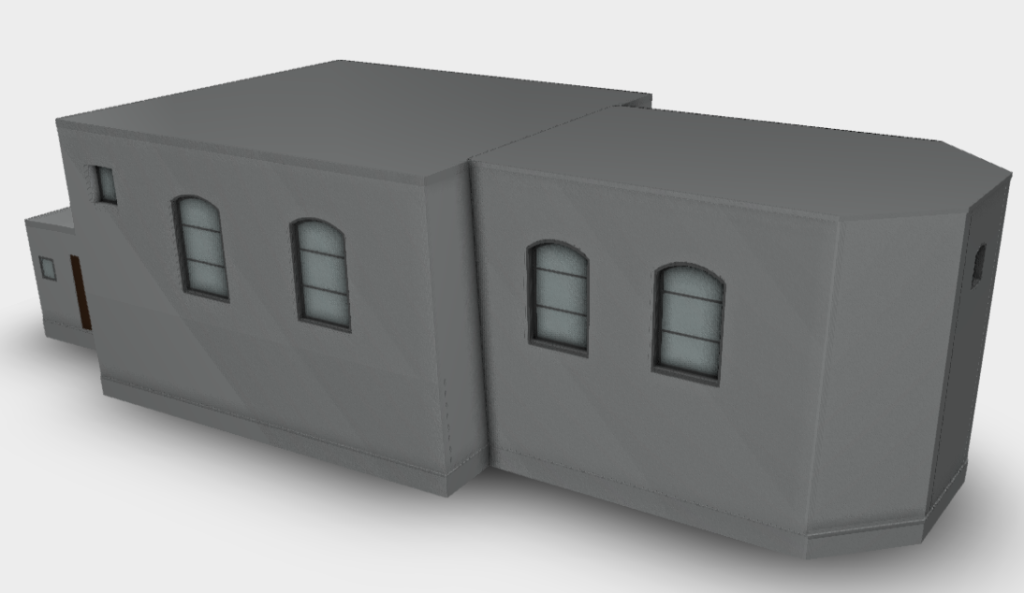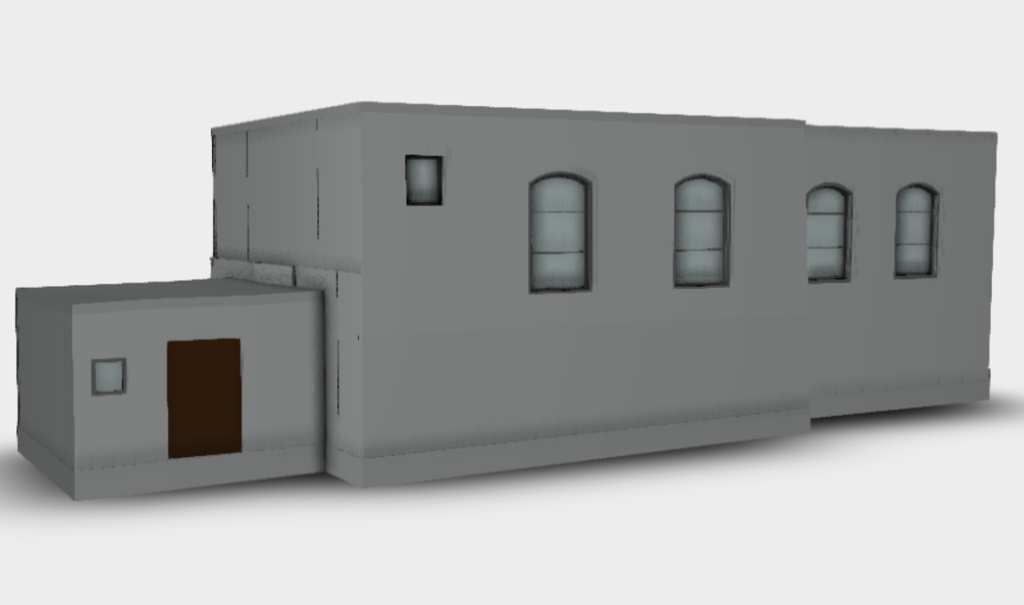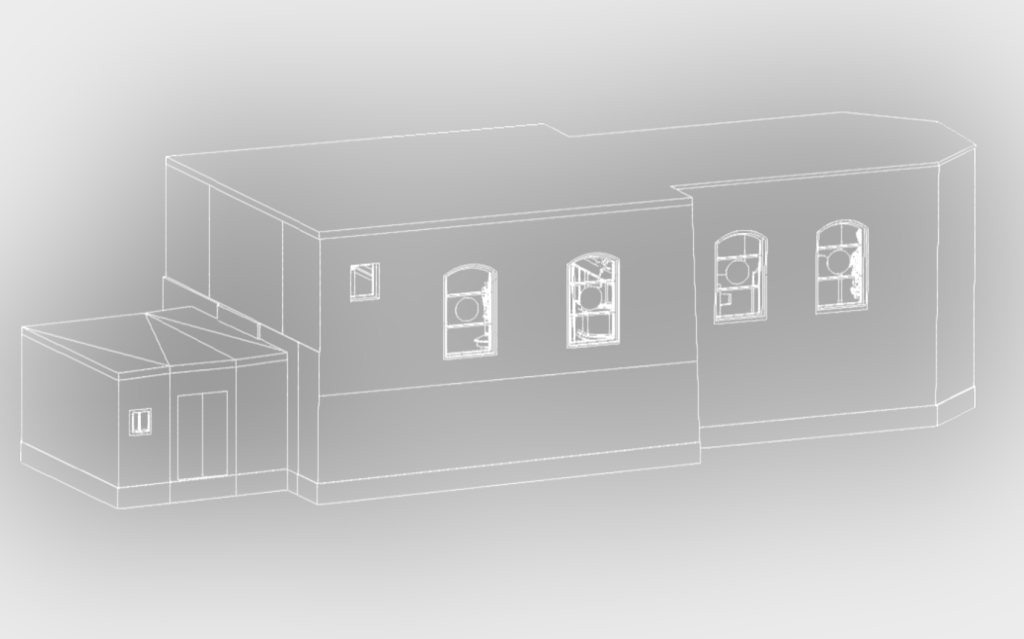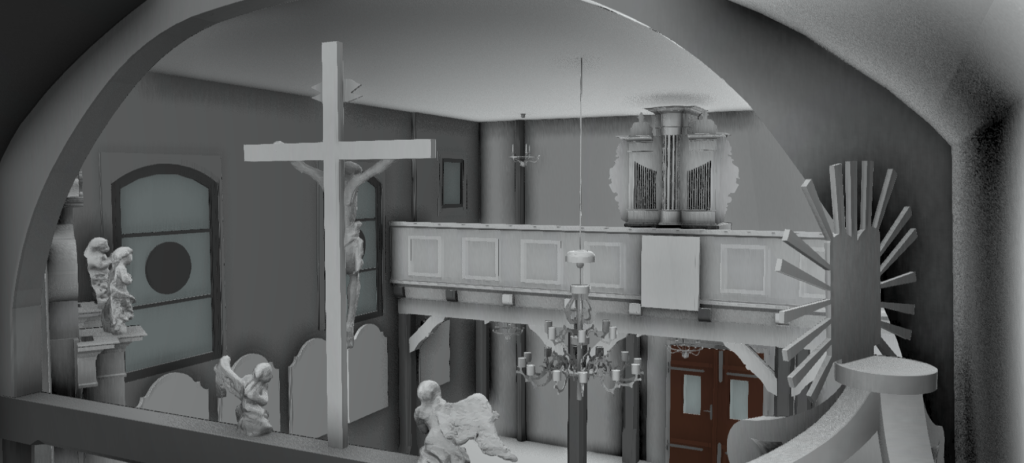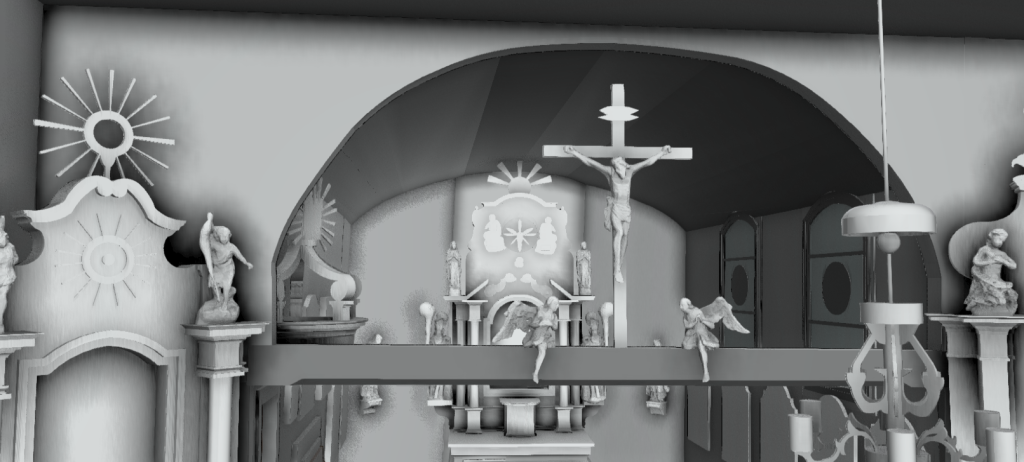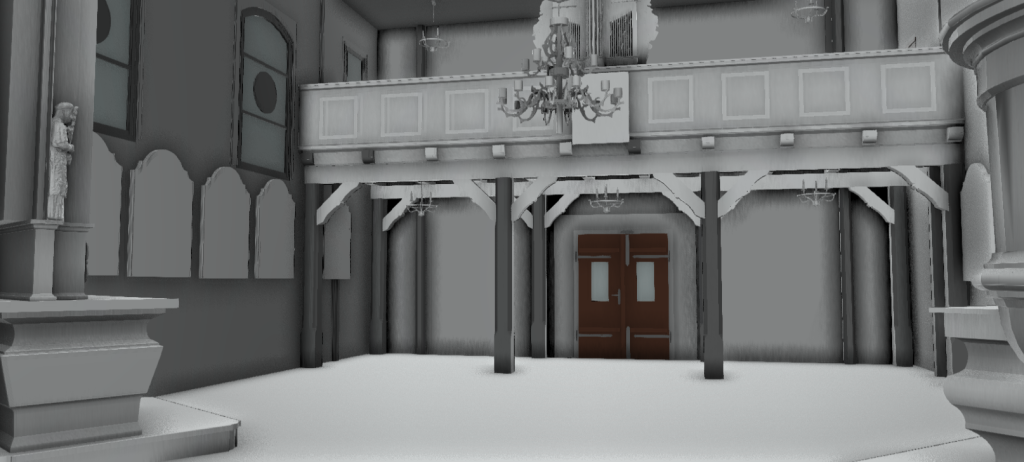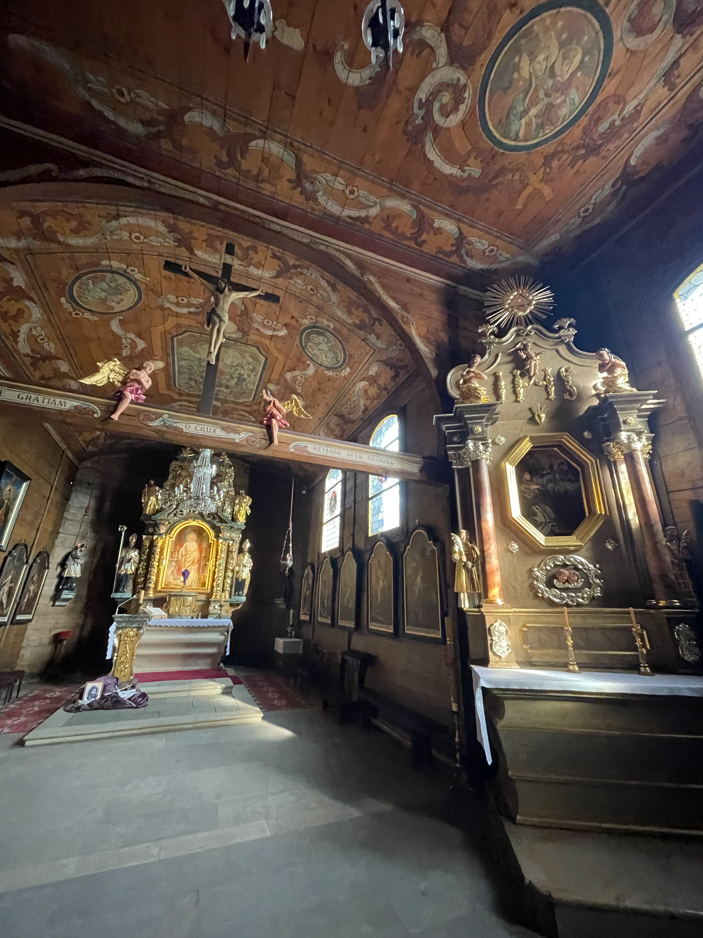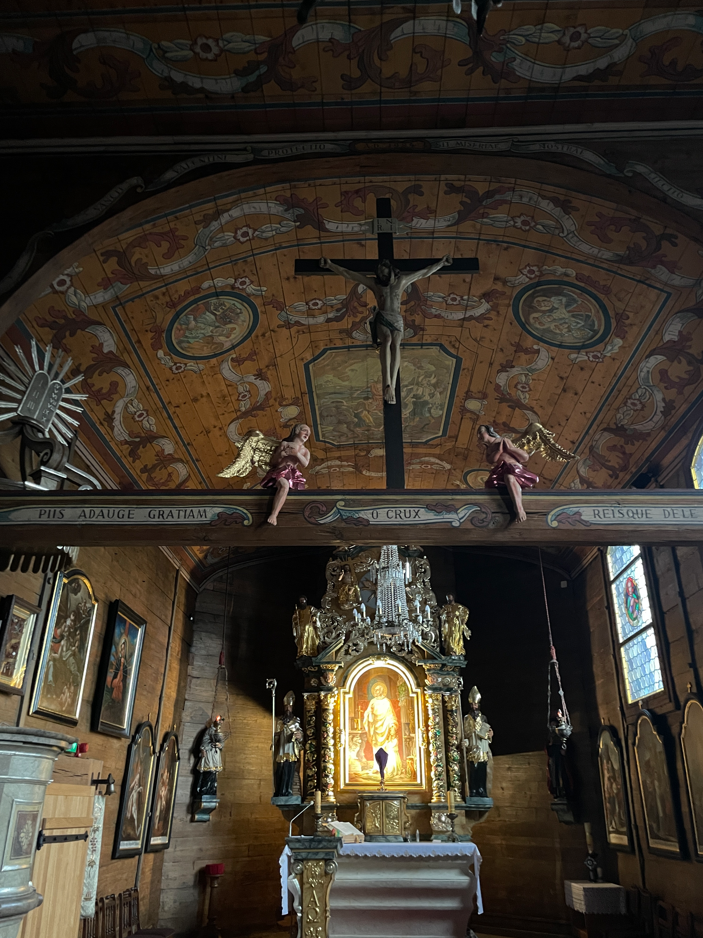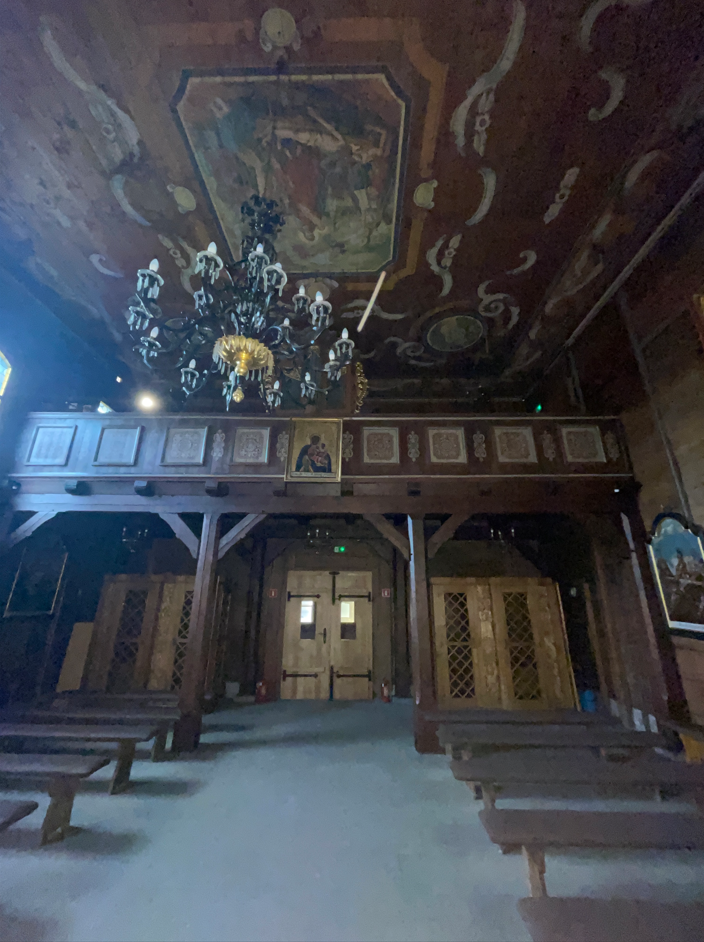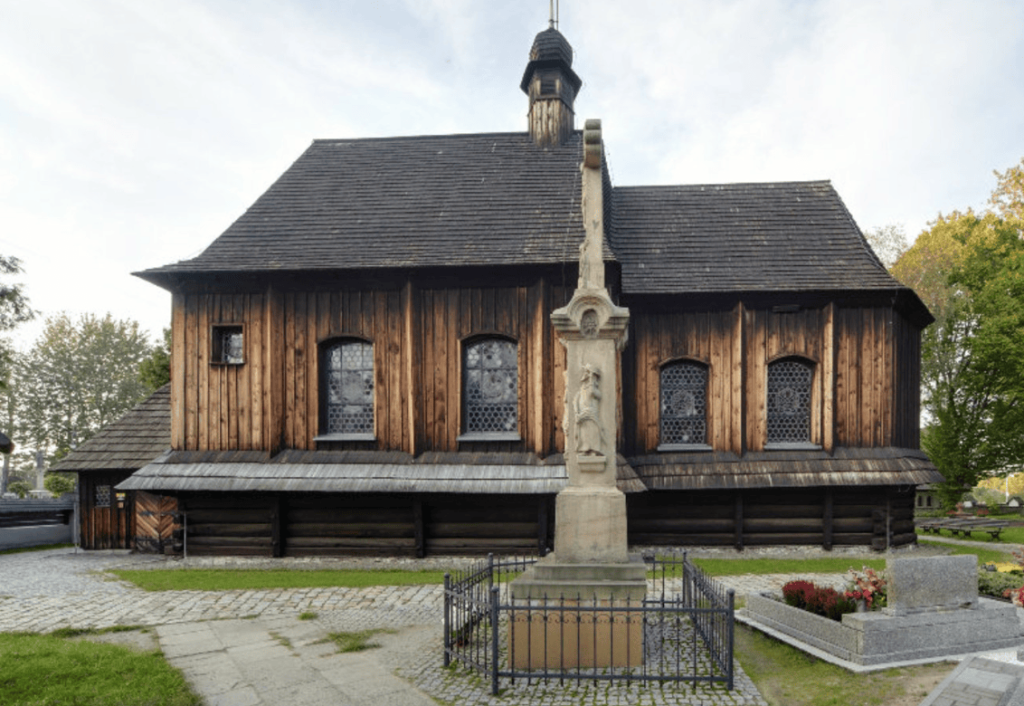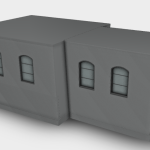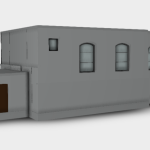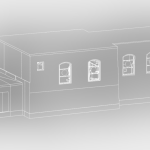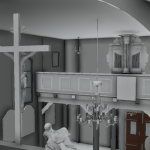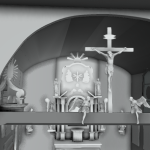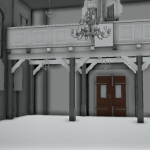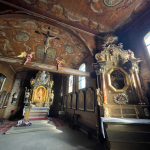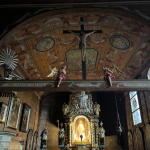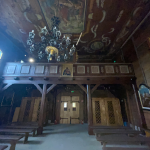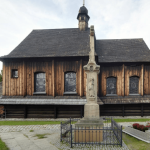As-Built Documentation for the Medieval Church Restoration
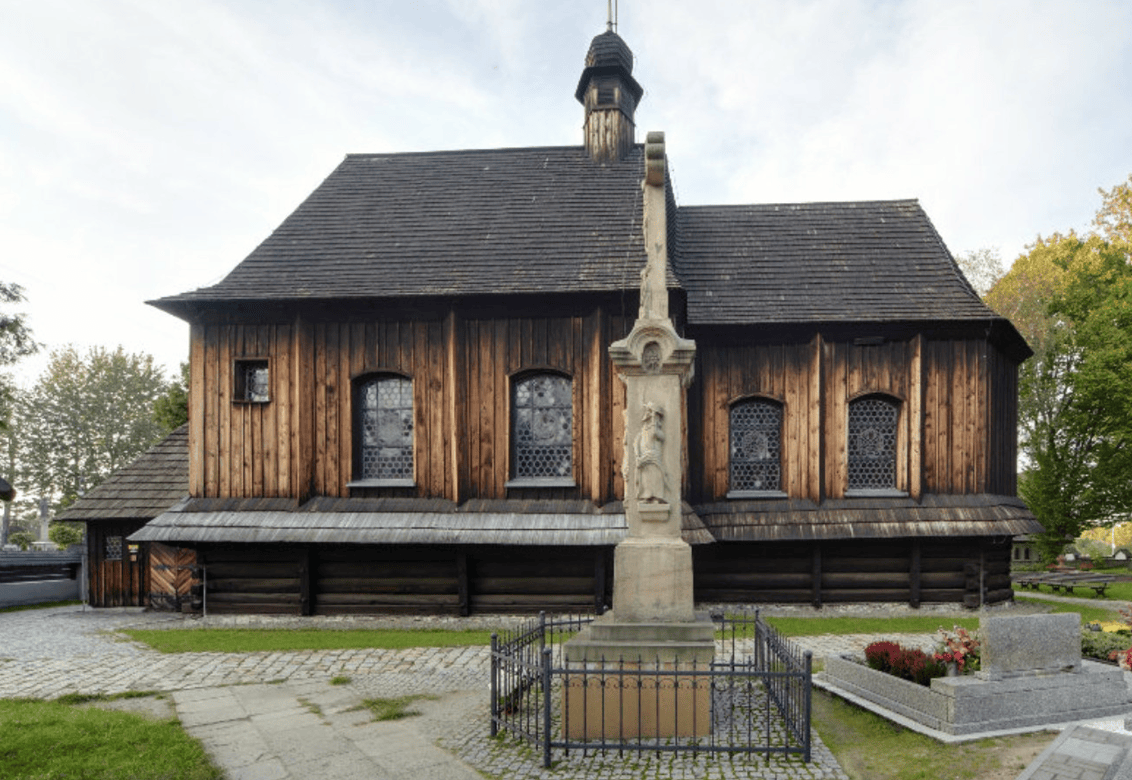
The Project: Preserving a 17th-Century Church with Modern Technology
This project involved the restoration of a 17th-century wooden church, an architectural gem with centuries of cultural and historical significance. As the structure aged, it became critical to preserve its integrity while ensuring the accuracy of every detail during restoration. To achieve this, an architectural firm hired us to perform a laser scanning survey that would provide the necessary documentation to safeguard this important piece of history.
Using 3D Laser Scanning technology, we meticulously captured both the interior and exterior of the church. Our goal was to create precise architectural drawings and 3D models that could serve as a reliable foundation for the entire restoration process. The laser scanning process provided a detailed and accurate representation of the church’s architectural elements, which was essential for preserving its historical and cultural value.
3D Scanning of Church Process & Result
Why Laser Scanning Was Crucial for the Restoration of this Historic Church
Traditional methods of building measurement, such as using manual tools or laser distance meters, are prone to errors, especially when documenting intricate historic structures. These inaccuracies can lead to significant issues during restoration, as essential elements may not fit correctly or could be altered, thus compromising the authenticity of the restoration.
Laser scanning technology, on the other hand, ensures that no detail is missed. The laser scanning method captures every architectural element with extreme precision, offering an accuracy of up to 1 millimeter. This data is then transformed into high-quality 2D drawings and 3D models using software like SketchUp, which will be essential in the restoration of the church.
Surveying a Historic Church: A Comprehensive Approach
For this project, we scanned approximately 2,150 square feet (200 square meters) of space, covering both the interior and exterior. The laser scanning process included:
- Interior Spaces: We scanned every room inside the church, capturing details of the altars, statues, pulpit, and organ.
- Exterior Facades: The outer walls, windows, stained glass, and intricate wooden features of the church were scanned with the same level of precision.
- Surrounding Grounds: The pathways and other external features surrounding the church were also mapped to provide a complete view of the site.
The point cloud data generated from the scanning process captured every detail, which is crucial for ensuring that the restoration team works with accurate and reliable documentation. This technology helped document and preserve the historical and cultural value of the church, preventing the loss of its unique architectural characteristics during the restoration.
Levels of Detail for Architectural Restoration
Different levels of detail (LOD) were applied to various architectural elements to ensure that the restoration process was efficient and focused on key areas:
- LOD450: High-detail modeling for essential structural elements like doors, windows, columns, stairs, balustrades, and window sills, ensuring complete accuracy.
- LOD300: For decorative features such as altars, statues, and the organ, a medium level of detail was applied. This allowed for a simplified representation while maintaining the overall integrity of these elements.
The Benefits of 3D Scanning for Historic Restoration Projects
Restoring a historic building, especially one as old as a 17th-century church, demands a high level of precision. Laser scanning technology provides several key advantages over traditional surveying methods:
- Unmatched Accuracy: With laser 3D scanning, we can capture architectural details down to the millimeter, ensuring that the restoration team has the most precise data available.
- Time Efficiency: Laser scanning is faster than traditional methods, significantly reducing the time needed for measuring and documenting the structure.
- Cost-Effective: Despite its precision, 3D scanning can be more cost-effective than traditional methods due to the elimination of errors and the reduced need for rework.
Deliverables: Detailed 2D Drawings and 3D Models for Restoration
Upon completing the laser scan, we provided two main types of deliverables to the architectural team:
- 2D Drawings: Detailed floor plans, elevations, and sections that could be directly used for restoration planning.
- 3D Model in SketchUp: A high-resolution 3D model of the church, which allowed the team to explore every detail of the structure before beginning physical restoration. This model balanced high-detail elements with simplified decorative features to ensure both accuracy and ease of use.
Preserving Cultural Heritage with Modern Technology
The primary goal of this project was not only to restore the physical structure of the church but also to preserve its historical and cultural significance. By using laser scanning technology, we ensured that every aspect of the church was documented accurately. This level of detail allows restorers to work confidently, knowing that they can maintain the building’s original architectural integrity.
Our work has proven that advanced laser scanning technology can play a crucial role in cultural heritage preservation, ensuring that historic landmarks can be restored to their former glory without losing any of their authenticity. The 3D models and architectural drawings we created will serve as lasting records of this church’s architectural legacy.
FAQs about Laser 3D Scanning and Historic Restoration
What is laser scanning, and why is it ideal for historic restoration?
Laser scanning is a method of capturing detailed measurements using laser technology. It’s ideal for historic restoration because it offers precise data that ensures the authenticity of the structure is maintained.
Can laser scanning be used on any building?
Yes, laser scanning is versatile and can be used on buildings of any size, from modern constructions to centuries-old landmarks like the church in this project.
How accurate is laser scanning compared to traditional surveying?
Laser scanning is far more accurate than traditional surveying methods, offering millimeter-level precision that’s crucial for detailed restoration work.
How long does it take to scan a historic building?
The time needed depends on the size and complexity of the building, but laser scanning is typically faster than manual surveying methods.
Can the 3D models from laser scanning be used in architectural software like BIM?
Yes, the data collected from laser scanning can be integrated into BIM (Building Information Modeling) systems, allowing for advanced analysis and planning.
What are the costs associated with laser scanning for restoration?
While costs can vary depending on the project’s scope, laser scanning often saves money in the long run by preventing errors and minimizing the need for corrective work.
Contact Us for Expert Laser Scanning Services
Looking for a reliable partner for your historic restoration project? Our team specializes in laser scanning and architectural documentation that ensures every detail is captured with unmatched precision. Contact us today to learn how we can assist in preserving the architectural and cultural integrity of your project.

